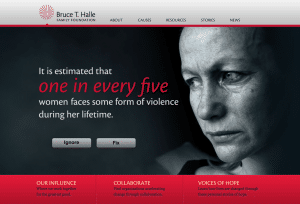“Storytelling is the most powerful way to put ideas into the world today.” – Robert McKee when asked why storytelling is important.
Think about it: Your own business idea started from a story. You noticed a need, you brainstormed, you implemented; but how did you notice in the first place? How did your idea come to life? Where did you get your inspiration from?
Where there’s an idea, there’s a story, and then there’s a business to run. Don’t skip the story part.
Unfortunately, most businesses today focus solely on selling their products. Entrepreneurs are becoming less interested in providing the best services or connecting with customers and only interested in raising their financial gains. Most want big profits, while their clients are left with not too much to choose from. A business that respects itself must make shopping an incredibly exciting activity for its customers.
So, respect your duty to the client, and include storytelling into your corporate marketing. Here’s how.
-
Why You?
The first question you should ask is “why me?” As simple as this question might sound, there’s a lot of meaning behind it. In order to capture your customers’ interest and satisfy their needs, you must offer high-quality products or services. By analyzing your work, you are asking an elementary, yet crucial question – ‘why would I buy from my company? Why me?’
Come up with simple answers and write them down. Storytelling is about convincing, satisfying, inducing, opening up your business for transparency. Storytelling is about giving people reasons to choose you. This takes intensive background work – some of which is examining your company’s shortcomings and perfecting them.
Below is a short list of ideas you might want to reflect upon. Maybe you won’t be able to answer some of these questions, but don’t worry about it. Have patience. Deborah, who works for EssayOnTime and is a great book writer, shared something thrilling with me the other day – something that taught me an important life lesson:
She quoted Harvey Mackay, “Time is free, but it’s priceless. You can’t own it, but you can use it. You can’t keep it, but you can spend it. Once you’ve lost it, you can never get it back.” So, I repeat. Give it time. Have patience. Don’t give up. Ask yourself:
- Why my brand? What’s special about it?
- What need am I meeting?
- What new product/service am I innovating?
- Why my product? What special features does it have?
- Why my company? What do I offer that my competition doesn’t?
-
Make it Memorable
Storytelling is pure psychology. If you deliver the story rightfully, your profits will boost. Here you can find some quick advice:
- Concentrate on the details – they matter. Focus on the action itself and how it came to life. What caused the events? What were the circumstances? Why? Customers want to empathize with your characters. That’s what you’re ultimately selling; the product itself is just a bonus.
- Make it easy for the wide public. People hate complicated messages. They will only pay attention to your story if it tells them something simple. They’re hurried. You can’t waste your short advertising time describing lengthy events. Use clear prompts and calls-to-action. Keep your content organized and well-designed. Structure is vital.
- What’s in for them? Always include their wins in your story. What are they getting out of it? Why should they pay attention to your product? Why are you taking their time? Reasons, reasons, reasons.
-
Keep it Brief
“Don’t assume an audience will listen, convince them that they must – and have the confidence to lead with your strongest point,” shares one member of The Guardian Small Business Network on the website’s platform. Improper communication might soon lose your clients’ interest. Keep them alert and convince them to buy from you. “But how?”
Here’s how. I’ll give you the key to success. Keep it brief! Your content matters, but what matters even more is its length. Customers will have neither the time nor the patience to analyze your content thoroughly. They will give it a quick glance, and decide – are they staying, or are they not? Here’s where you must step in and say, “you’re staying. This is why,” and come up with strong, concise arguments.
Now that you understand the importance of brevity, how can you keep your audience interested?
- A hook is always welcomed – give your audience the first reason to stay. Capture their attention in the first five seconds by using a hook.
- Keep them engaged by emphasizing your company’s strongest point – that’s the first answer you came up within the ‘why me?’ question.
- If you must include data, explain it using visual images or funny content – don’t get them bored.
-
Use the Right Tools
Multimedia has become an incredibly powerful entity everywhere in the world. Use it wisely, and you’ll reach success in no time.
- Include visual imagery as often as you can
- Include interviews and self-made videos to draw your public’s attention
- Use texts and graphs just enough to keep them engaged
These will all help your brand master corporate storytelling in an exciting and meaningful way. Don’t let competition outrun you – give the best you have to provide quality content, quality services, and quality products. Use storytelling to make sure your company has a positive impact on the business world. Focus on the “why me?” question until you find a compelling answer. Then make your story memorable by adding essential details and visual data. Don’t forget to keep your audience interested by keeping your content brief. Good luck!










